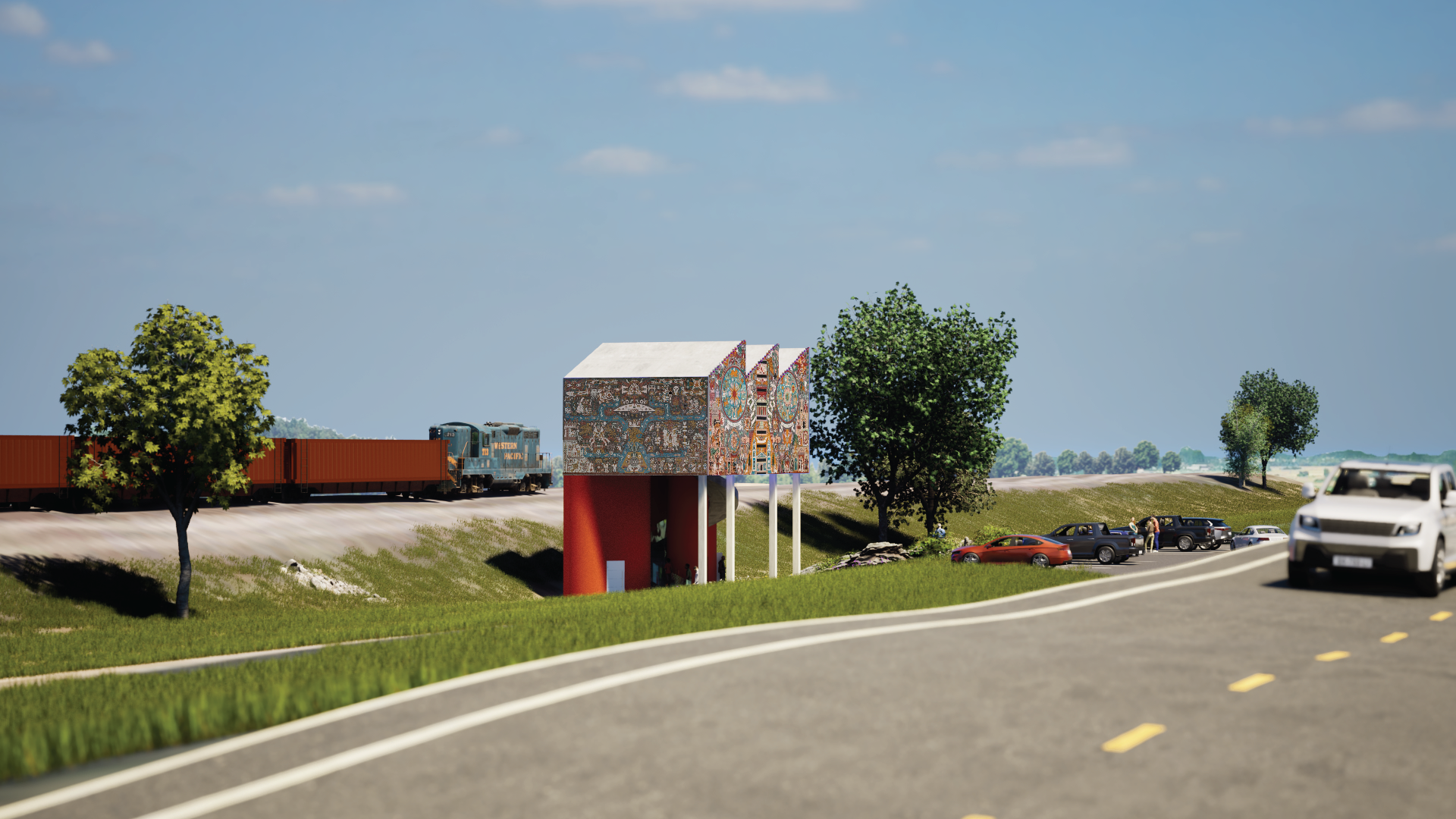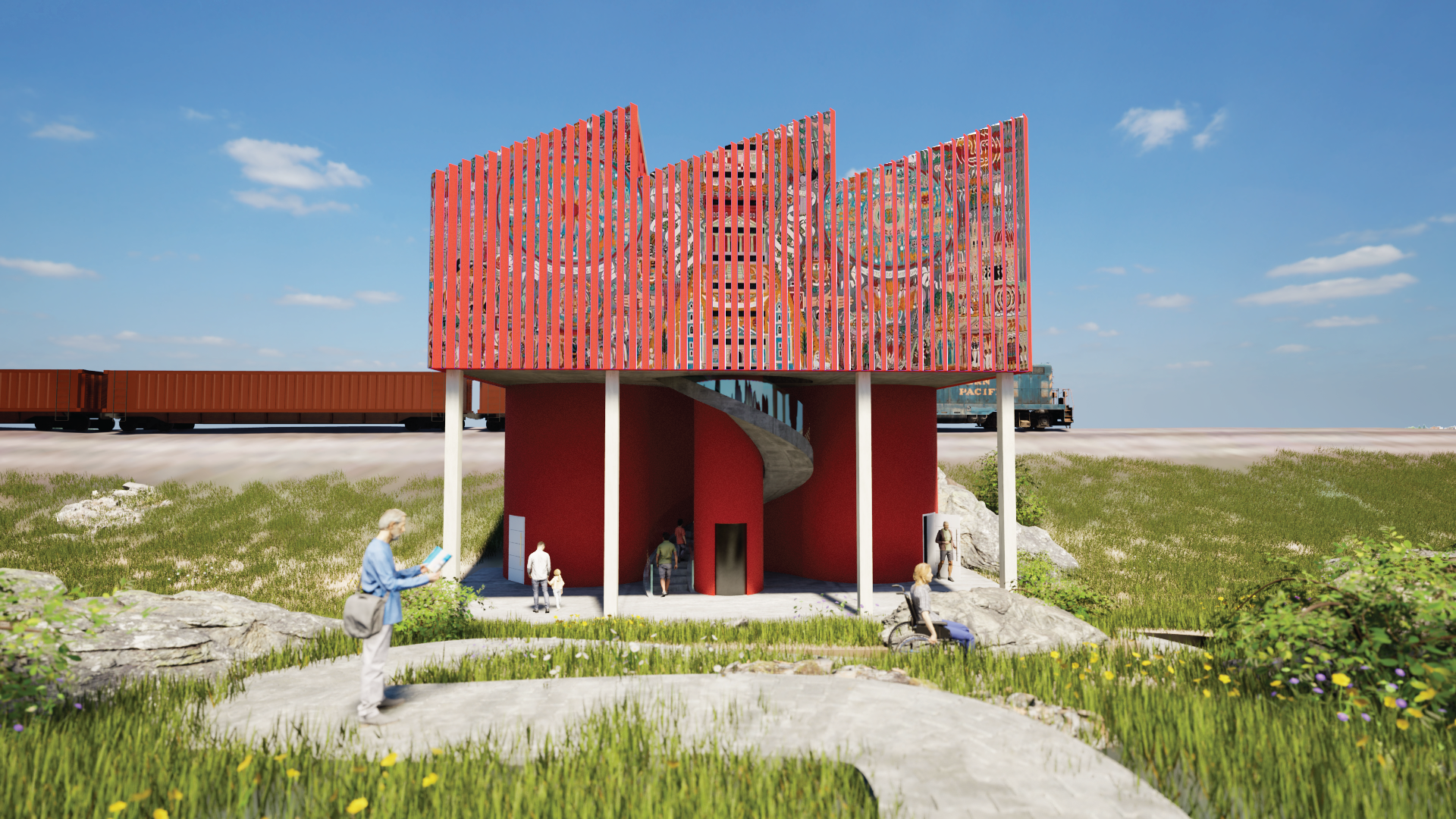ARCH 301 - STUDIO AVERSING - BILLBOARD PROJECT
PROJECT BRIEF
“Each student will be assigned an architect for whom they will design a living space or related program within the constraints and dimensions of a standard billboard. Your billboard must not only meet your inhabitant’s everyday needs but also showcase their talents, personality, and skills in a way that attracts visitors to a nearby roadside venue. This assignment challenges you to rethink conventional notions of landscape, site context, dwelling space, architecture as iconography, and American roadside culture.”
“Each student will be assigned an architect for whom they will design a living space or related program within the constraints and dimensions of a standard billboard. Your billboard must not only meet your inhabitant’s everyday needs but also showcase their talents, personality, and skills in a way that attracts visitors to a nearby roadside venue. This assignment challenges you to rethink conventional notions of landscape, site context, dwelling space, architecture as iconography, and American roadside culture.”
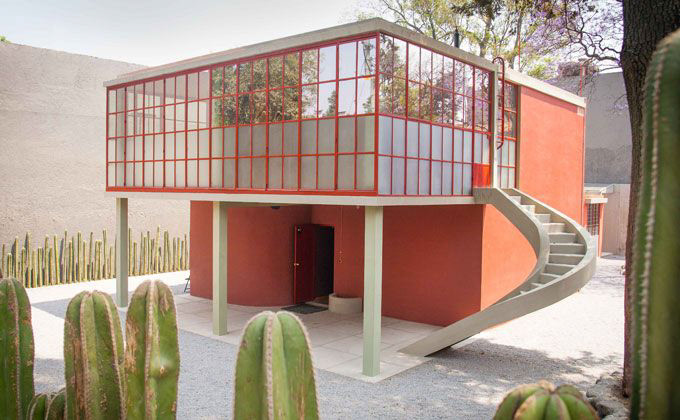
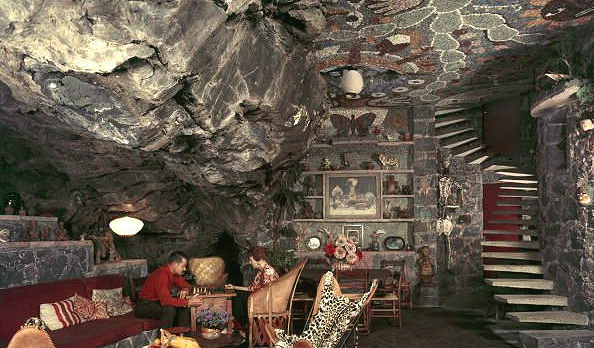
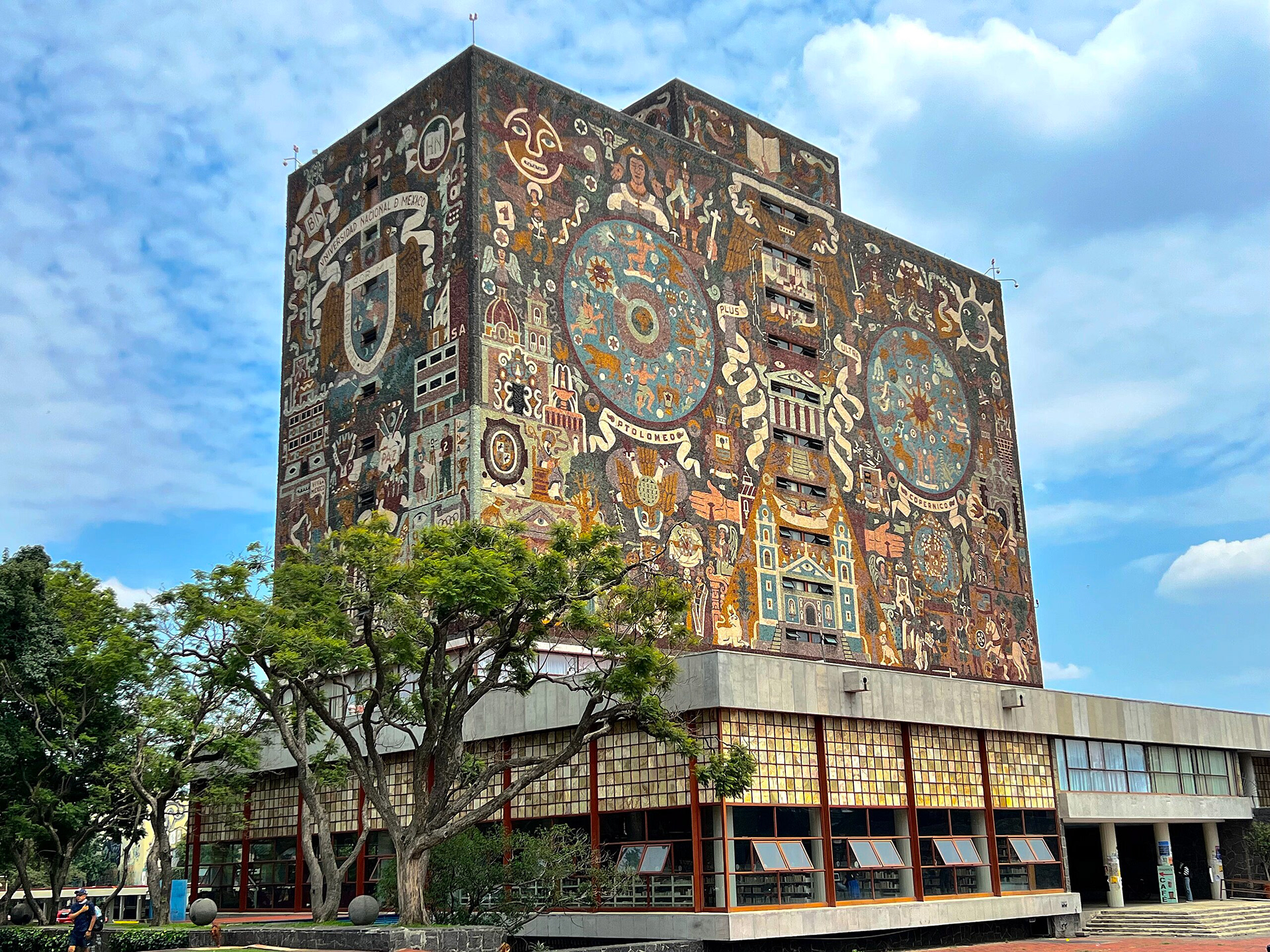
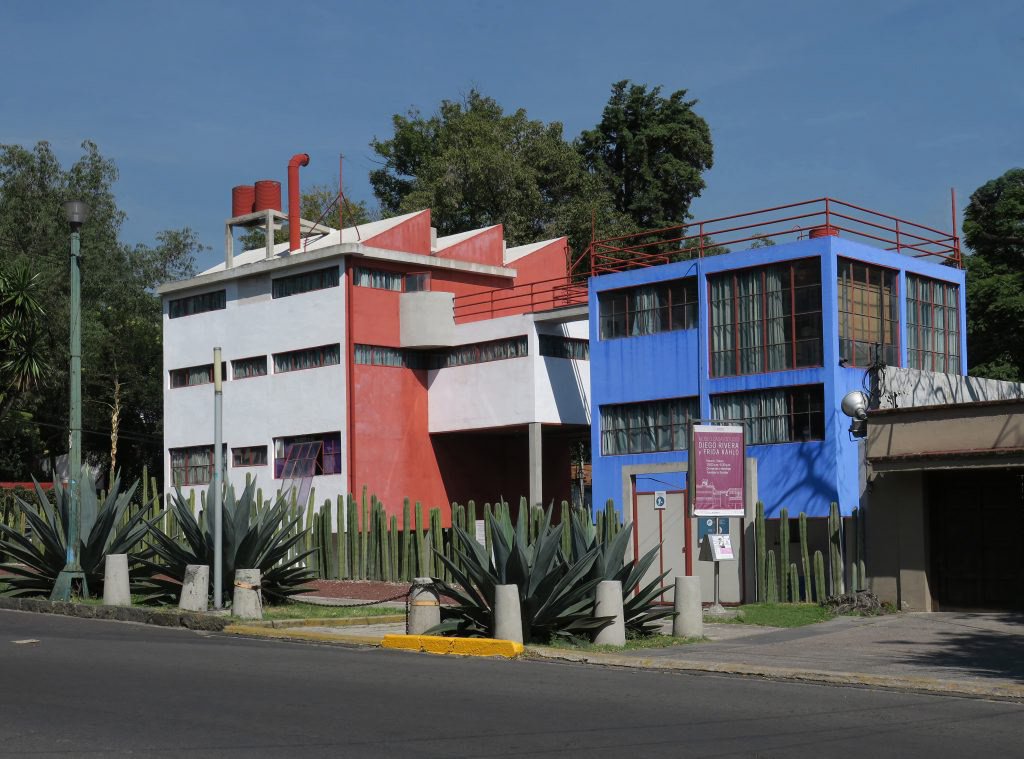
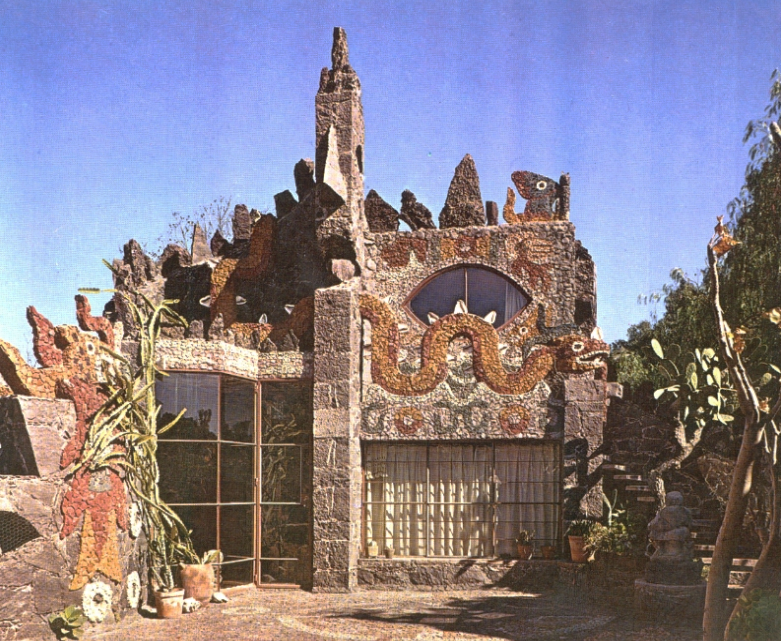

Architect Study: Juan O'Gorman
Juan O’Gorman (1905 - 1982) was a Mexican and Irish artist, muralist, and architect known for wide range of styles varying from total modernism and functionalism to intricate mosaic works. His most famous architectural works include the his home studio and the Diego Rivera and Frida Kahlo House and Studio, both of which resemble his more functional style. In contrast, the Library of the National Autonomous University of Mexico and his final project Cave House (where he spent the rest of his life) are complex stone and mosaic works.
O’Gorman’s two styles contrast each other greatly, and yet cohesive themes and color usage can be seen in his works throughout the years. Much in the same way, the white and Hispanic populations of Crawford County, IA have much more in common than they realize. This project aims to showcase both cultures and foster relationships between the two communities in an area where tensions have grown between demographics.
CRAWFORD COUNTY, IA
CRAWFORD COUNTY DEMOGRAPHICS
With a population that is 30.5% Hispanic, Crawford County has the largest percentage of Hispanic residents in the state of Iowa. Reports have indicated rising tensions in communities such as Denison, IA, as more members of the Latinx community move into historically white towns for factory and meat packing jobs in the region. With this in mind, I chose a site along Highway 30 near Denison, IA in Crawford County that serves as a community center to educate and foster relationships between the two groups. The project/billboard serves as an advertisement for the community center itself, as two facades showcasing Juan O'Gorman's two starkly different styles coexist on the same plane and change as those travelling on Highway 30 pass by. Coexistence of O'Gorman's styles parallel the aim of the project to promote the coexistence of cultures.
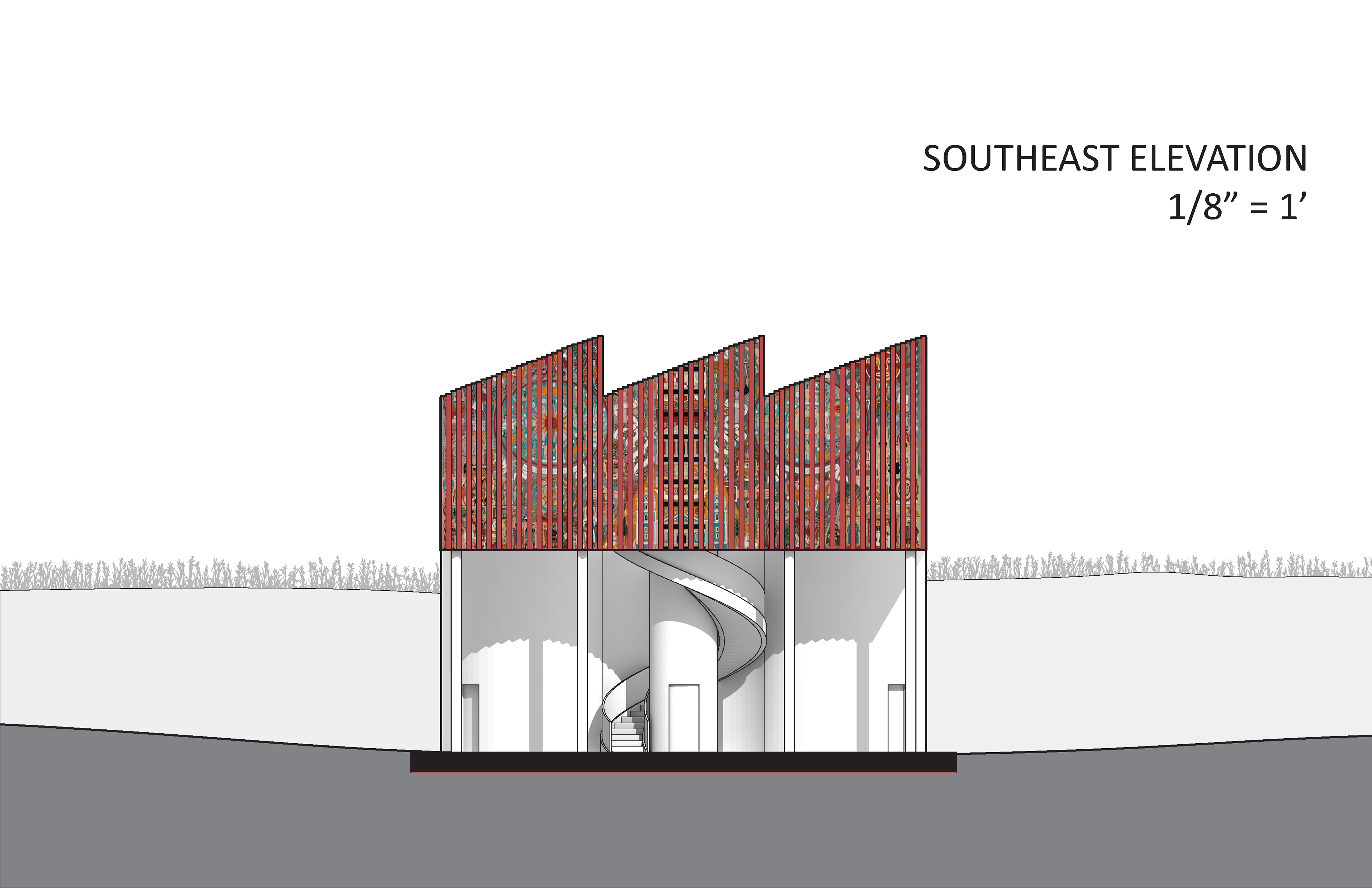
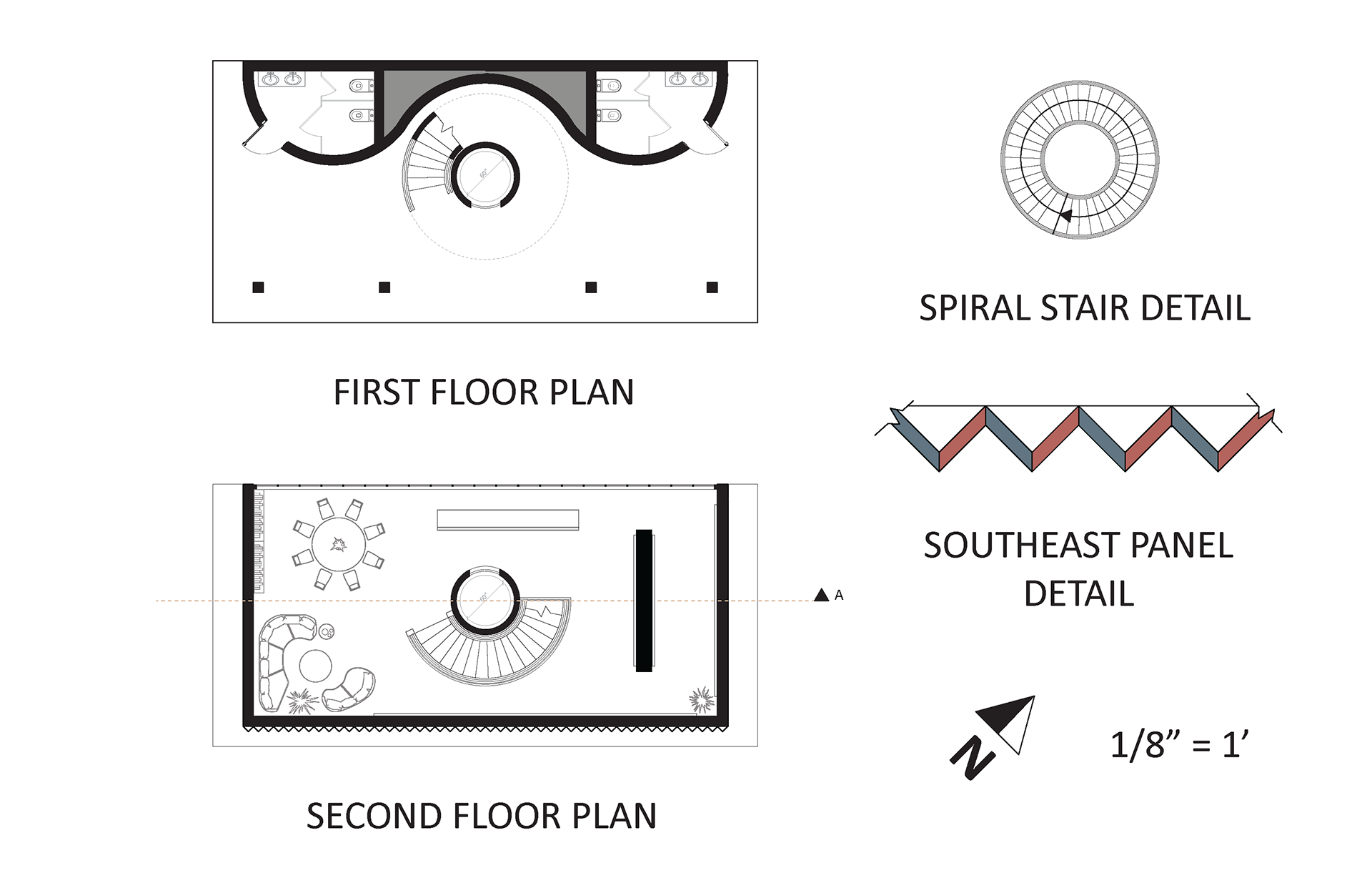
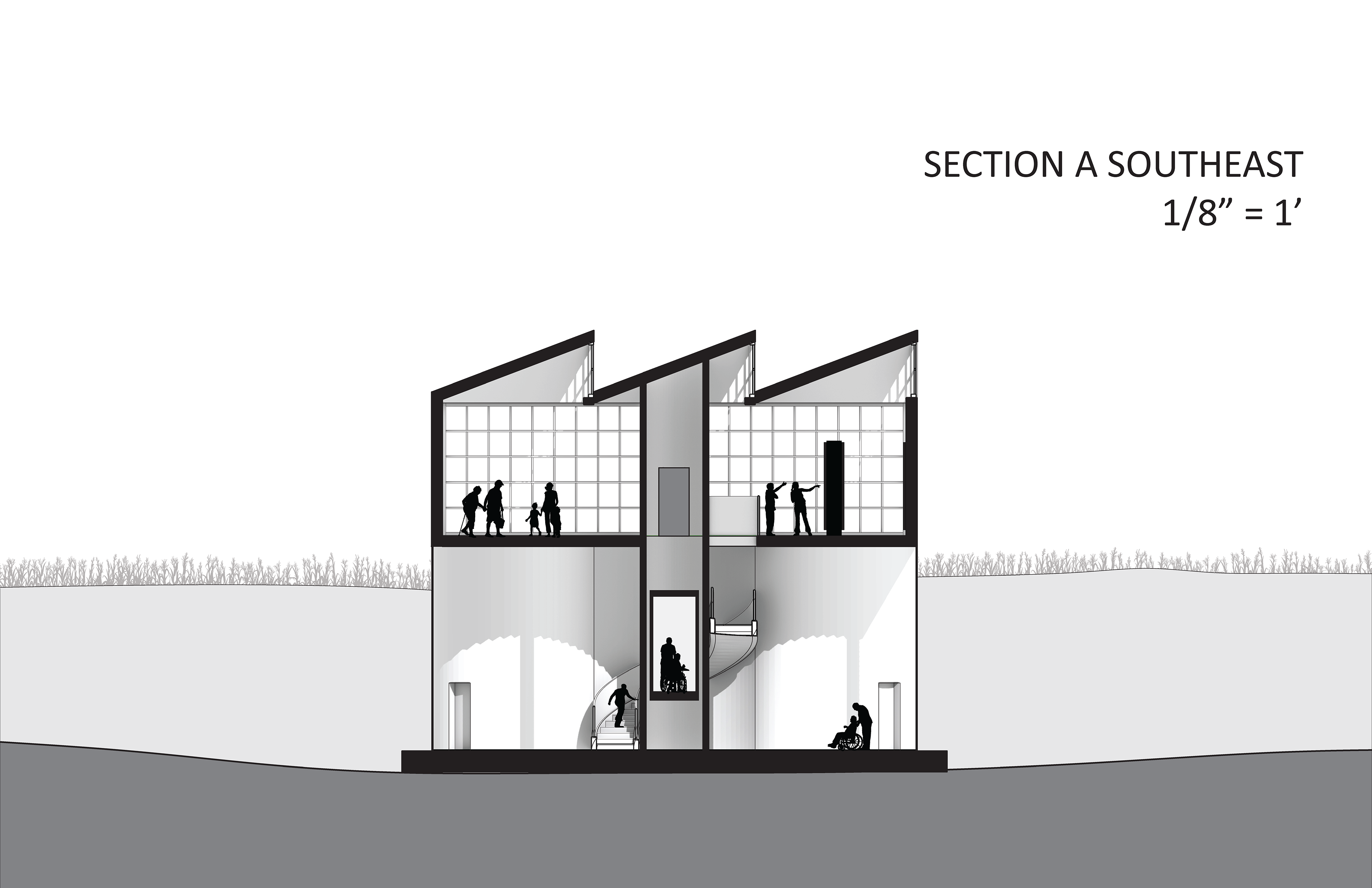
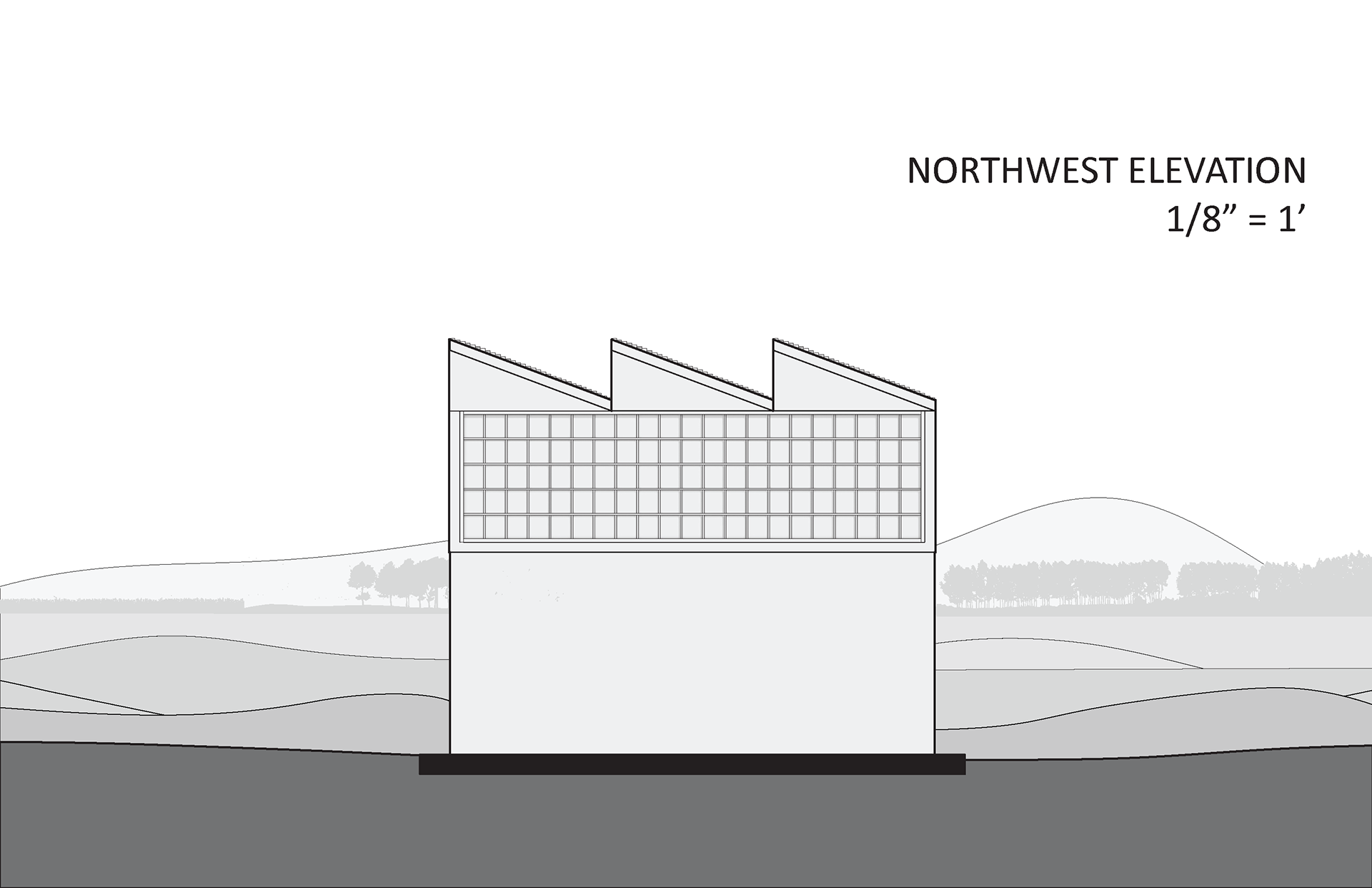
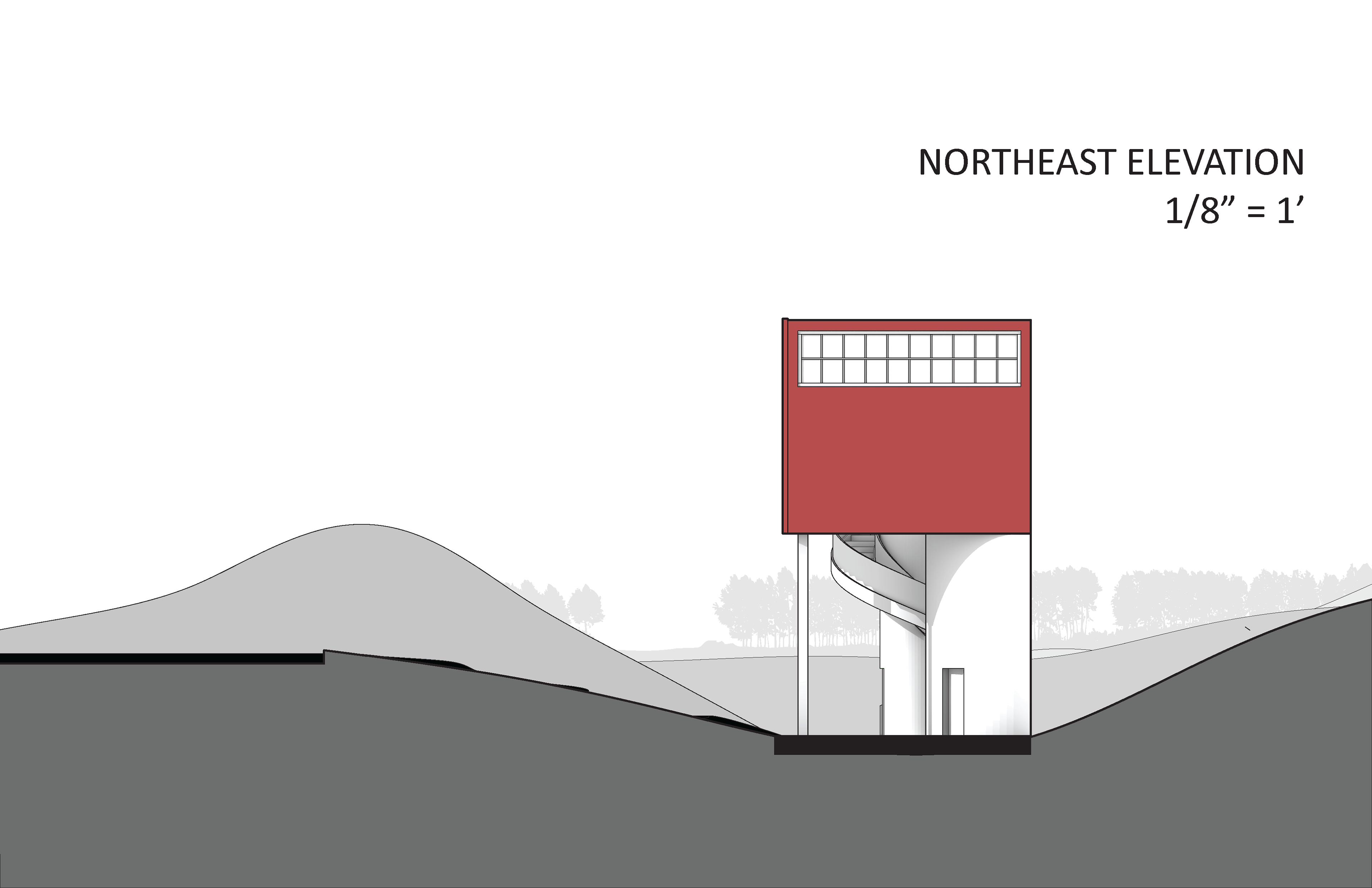
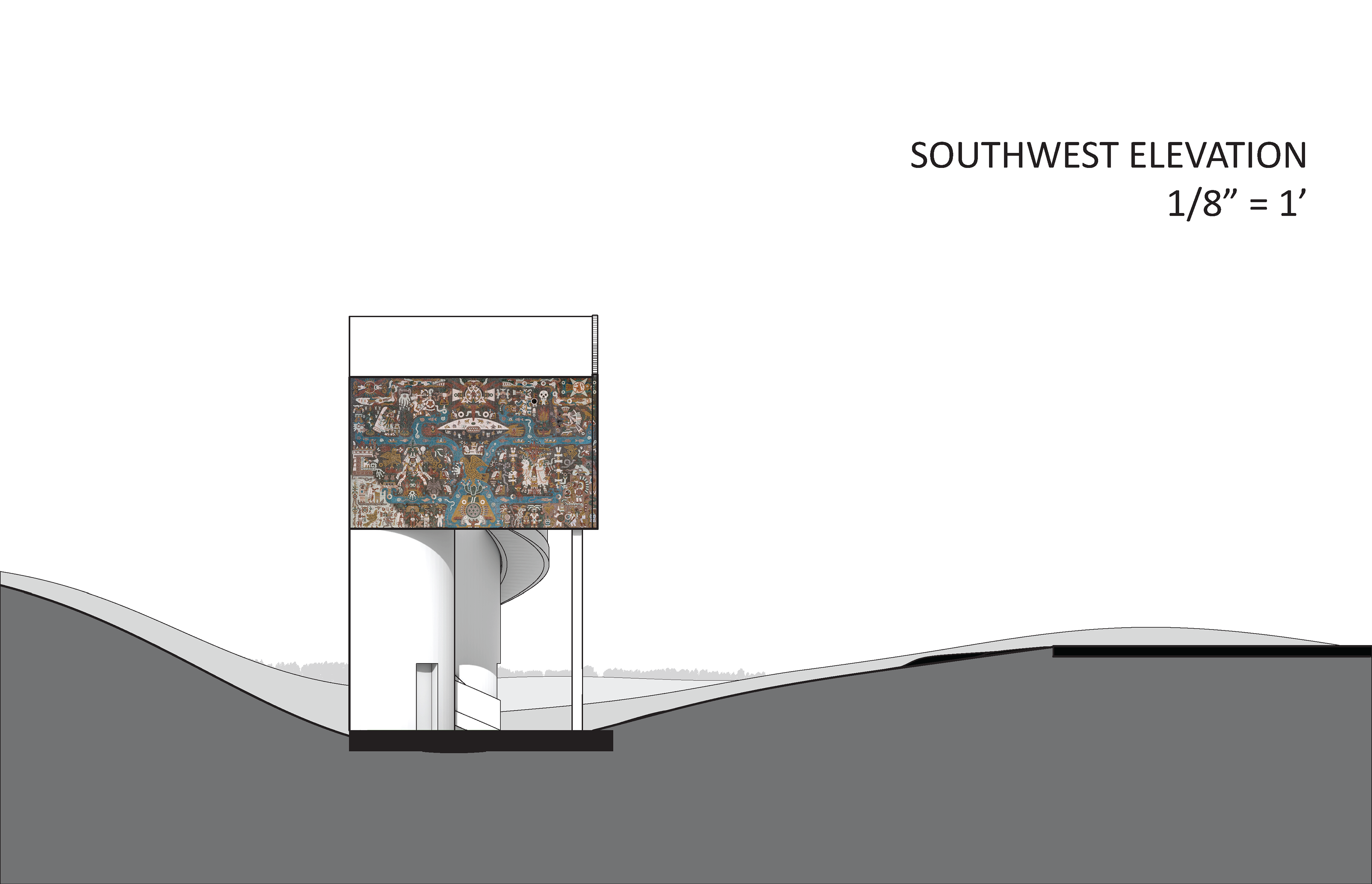
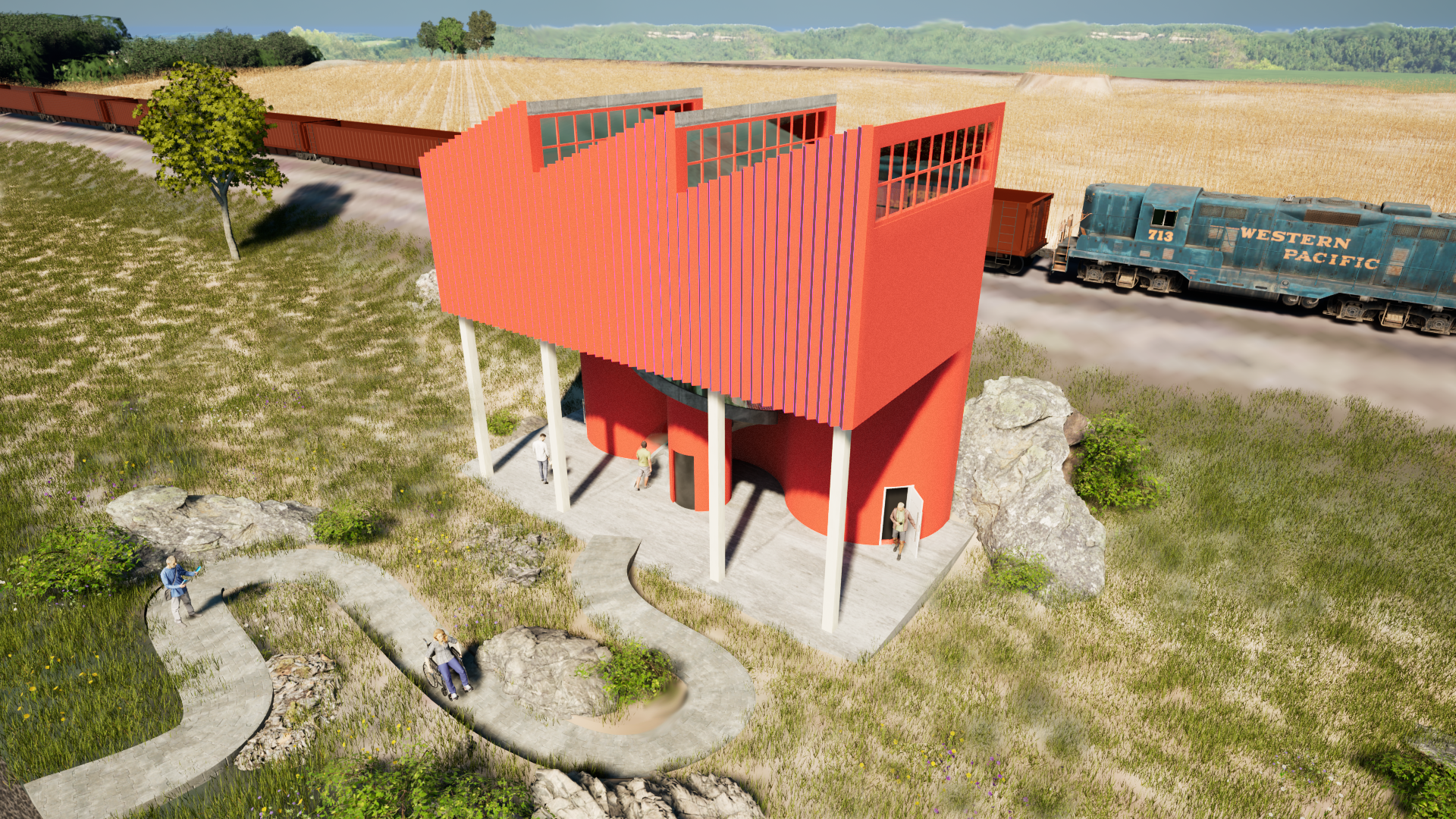
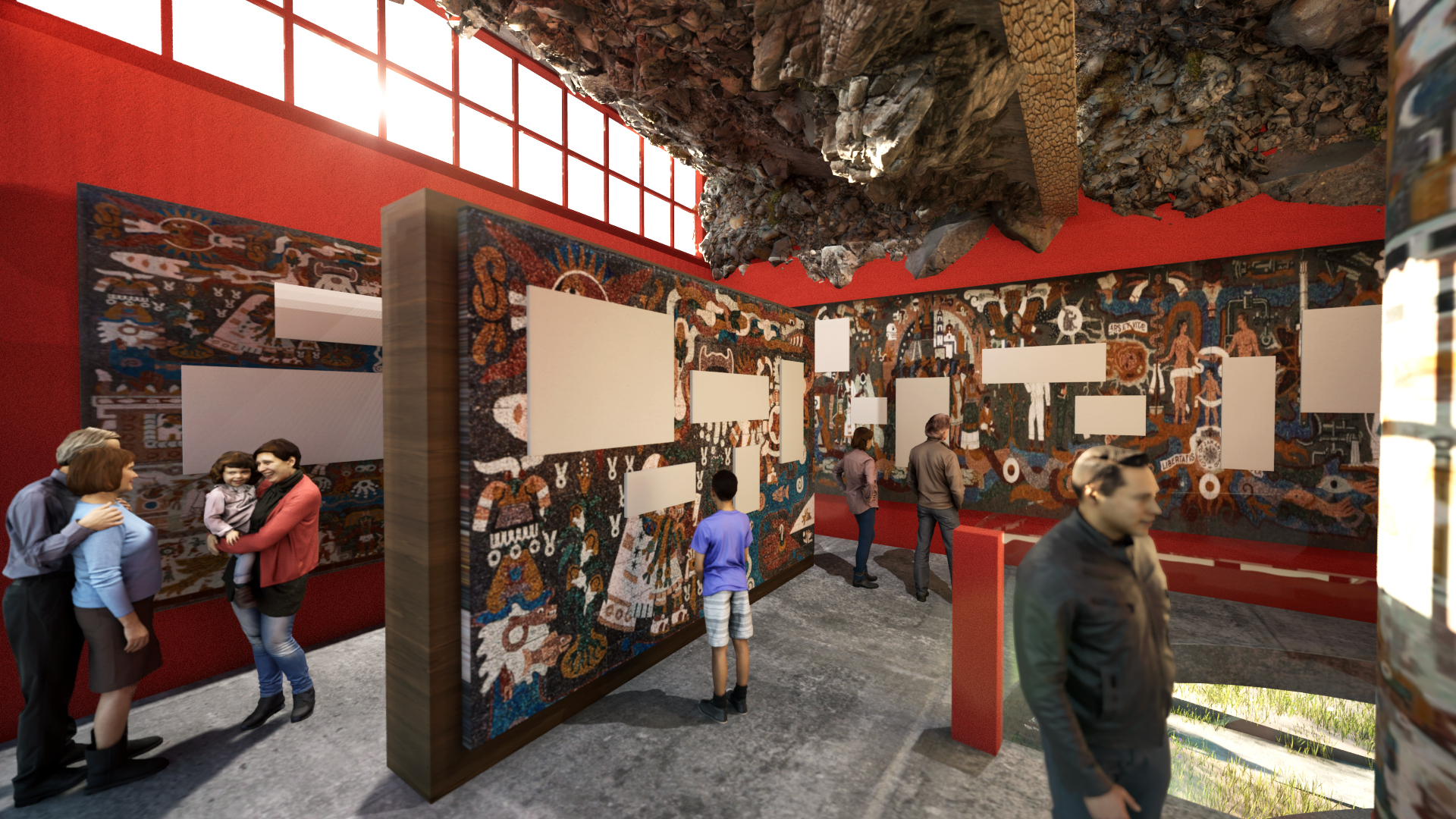
With the coexistence of Juan O'Gorman's two architectural styles, the exterior form of the billboard follows his more modernist and functionalist principals, emulating some of his earliest works with very rectilinear elements and his signature bright red facades. In contrast, the interior of the space aims to showcase his mosaic works, with display boards hosting visuals of his most famous murals and rock formations lining the underside of the ceiling as in his most famous rock work Cave House.
The two contrasting styles parallel the demographics of Crawford County, with the the exterior form and bright red color representing the more externally prominent white population in the state and surrounding region and the interior reflecting the hidden cultural history and values of the Hispanic population in Crawford County and similar areas.
With this principle of coexistence at play in the form and design decisions for the project, the hope is that the community center will help educate residents of the area and nurture an understanding between the two cultures and ease tensions in a manner that results in a harmonious coexistence.
